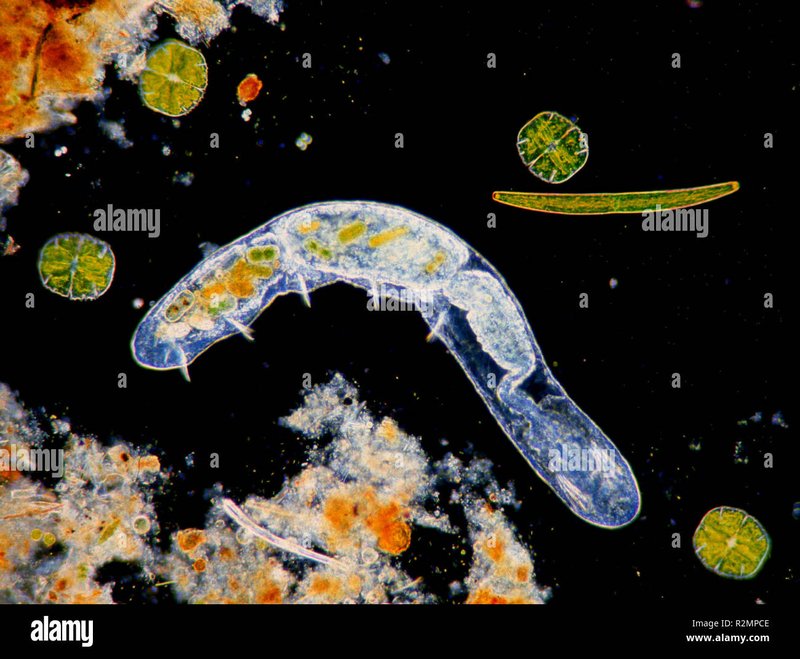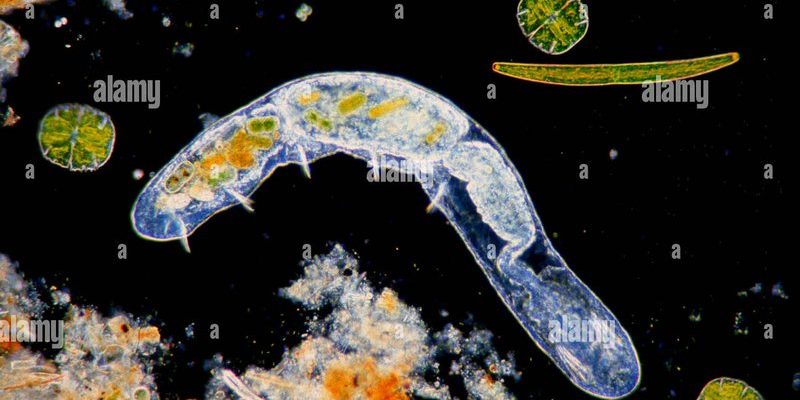
Using a field camera—like those from brands such as Bushnell or GoPro—offers a unique glimpse into the world of oligochaetes. These cameras allow researchers and hobbyists to capture behaviors and interactions that would otherwise go unnoticed. Whether you’re a scientist or just an enthusiastic nature lover, documenting the behavior of these creatures can deepen your understanding of freshwater ecosystems.
What Are Freshwater Oligochaetes?
Freshwater oligochaetes are segmented worms that thrive in aquatic environments, such as ponds, lakes, and rivers. They play a vital role in breaking down organic matter, enhancing nutrient cycling, and improving water quality. Think of them as nature’s little recyclers.
These worms are often found buried in sediment, which makes them hard to spot. They can range in size, but many are just a few centimeters long. Oligochaetes breathe through their skin and prefer environments rich in organic material. This allows them to contribute significantly to the ecosystem by aerating the soil and serving as a food source for fish and other aquatic animals.
You might be wondering how to notice them in action. That’s where field cameras come into play; they allow you to observe their behavior without disturbing their natural habitat. How cool is that?
Why Use Field Cameras for Observation?
Using field cameras to document oligochaete behavior offers several benefits. First and foremost, they are non-intrusive. Many parasites and pollutants can affect oligochaetes, leading to questionable data if the observers change their environment. By utilizing field cameras, researchers can minimize their impact on the ecosystem.
Additionally, field cameras capture long periods of time. This means you can see behaviors that might occur infrequently or at odd hours. For instance, capturing a feeding frenzy or mating rituals is much easier when you’re not physically present. This allows for a more comprehensive understanding of oligochaete activity patterns.
Lastly, they’re incredibly versatile. Field cameras can be set up at different depths or various locations, providing a bigger picture of how oligochaetes interact with their environment. You can’t ask these little creatures to cooperate or show up for a scheduled appointment!
Choosing the Right Field Camera
Not all field cameras are created equal. When selecting one for observing oligochaetes, you’ll want to consider a few important features.
- Resolution: Higher resolution captures clearer images, making it easier to identify behaviors.
- Waterproofing: Ensure the camera is waterproof if you’re placing it directly in a freshwater environment.
- Battery Life: Long battery life is essential for prolonged observation periods, especially if you’re documenting activities over several days.
- Night Vision: Since oligochaetes may be more active at night, a camera that can capture low-light conditions is a big plus.
Brands like Bushnell and GoPro offer robust options that fit these criteria. Keep in mind that while price matters, investing in a quality camera can yield better data and insights over time.
Setting Up Your Field Camera
Setting up your field camera might seem overwhelming, but it’s pretty straightforward once you get the hang of it. Here’s a step-by-step guide to help you through the process.
1. Select Your Location: Look for areas with high oligochaete activity—spots rich in organic material or near aquatic plants are good candidates.
2. Prepare the Camera: Ensure your camera is fully charged and has enough storage. Make sure to sync any remote features if applicable.
3. Position the Camera: Place the camera at a stable spot, either on the water’s edge or securely underwater, depending on your device’s waterproofing capabilities.
4. Check the Angle: Adjust the camera angle so that it captures the area where you expect to see the oligochaetes. You might need to do a little trial and error here.
5. Test the Setup: If possible, do a short test recording to make sure everything looks as expected before letting it run for a longer period.
Here’s the thing: don’t forget to check your camera regularly to ensure it’s still functioning and hasn’t been affected by environmental factors like flooding or debris.
Documenting Findings: What to Look For
Once your field camera is rolling, it’s time to pay attention to what you capture. Oligochaete behavior can vary widely based on environmental factors, food availability, and interactions with other organisms. Here are some behaviors you might want to document:
– Feeding: Watch how oligochaetes consume organic matter. They often pull material toward their mouths using their segments.
– Movement: Observe how they move through sediment and water. Are they gliding slowly or darting around?
– Reproduction: Keep an eye out for mating behaviors or cocoon production. This can be fascinating to witness!
– Interactions: Note any interactions with other aquatic creatures or their reactions to environmental changes.
Recording these behaviors can provide valuable insights into ecological health and the broader dynamics of aquatic ecosystems.
Challenges and Troubleshooting
Even with the best equipment and preparation, you may encounter challenges when documenting oligochaete behavior. Here are some common problems and tips on how to troubleshoot them:
– Poor Image Quality: Ensure your camera settings are optimal. Adjust the resolution or reposition the camera for better angles.
– Limited Battery Life: If you notice the battery drains quickly, consider using a larger external battery pack or a solar charger for long-term observations.
– Camera Positioning: Sometimes, your camera may not capture the desired area. Revisit your setup and adjust the angle or distance.
If you experience connectivity issues with remote features, double-check that everything is synced correctly, and follow the manufacturer’s troubleshooting guide.
Documenting the behavior of freshwater oligochaetes with field cameras offers a unique lens into the intricacies of aquatic life. These small creatures may not grab headlines, but their role in the ecosystem is invaluable. With a bit of effort and the right tools, you can unveil their secrets and contribute to the understanding of freshwater habitats.
Whether you’re a researcher or a curious nature enthusiast, this kind of observation deepens our appreciation for the underwater world. So grab your field camera and get ready to explore—you never know what fascinating behaviors you’ll discover!

